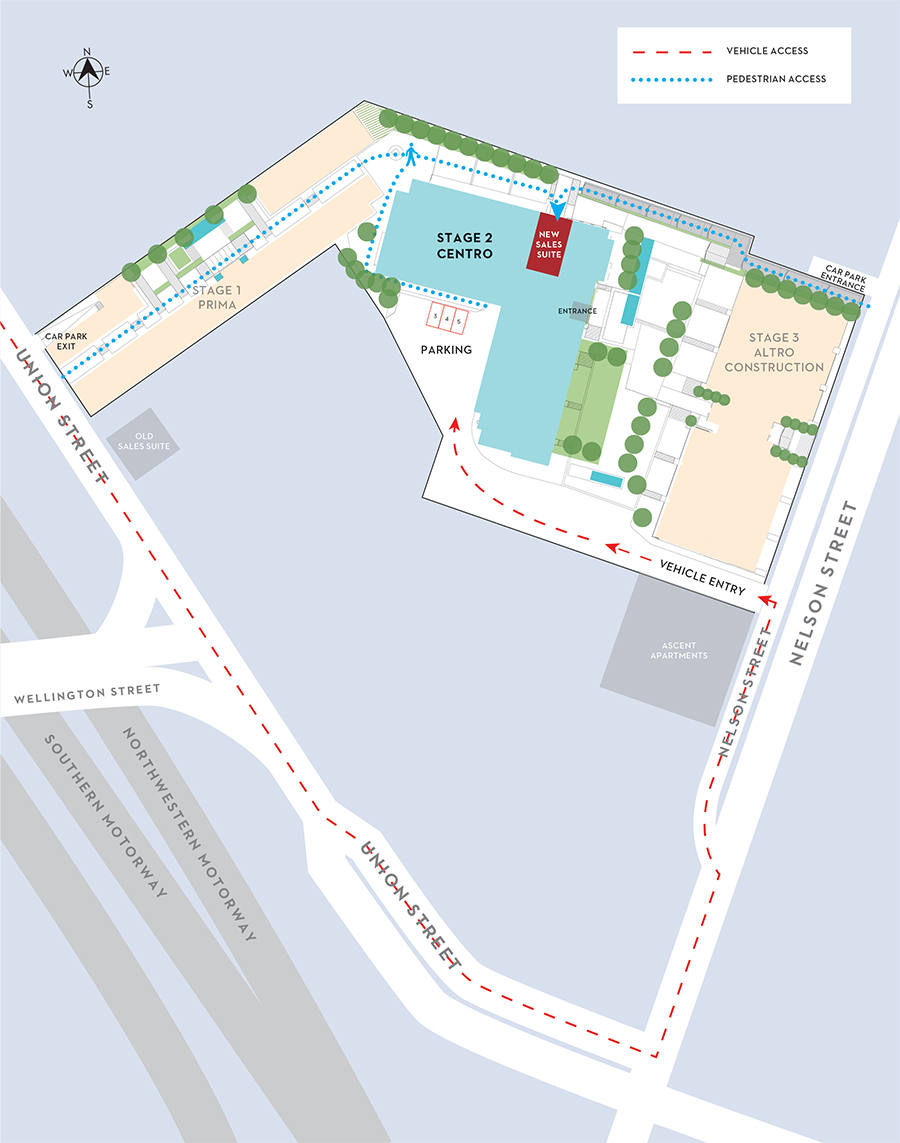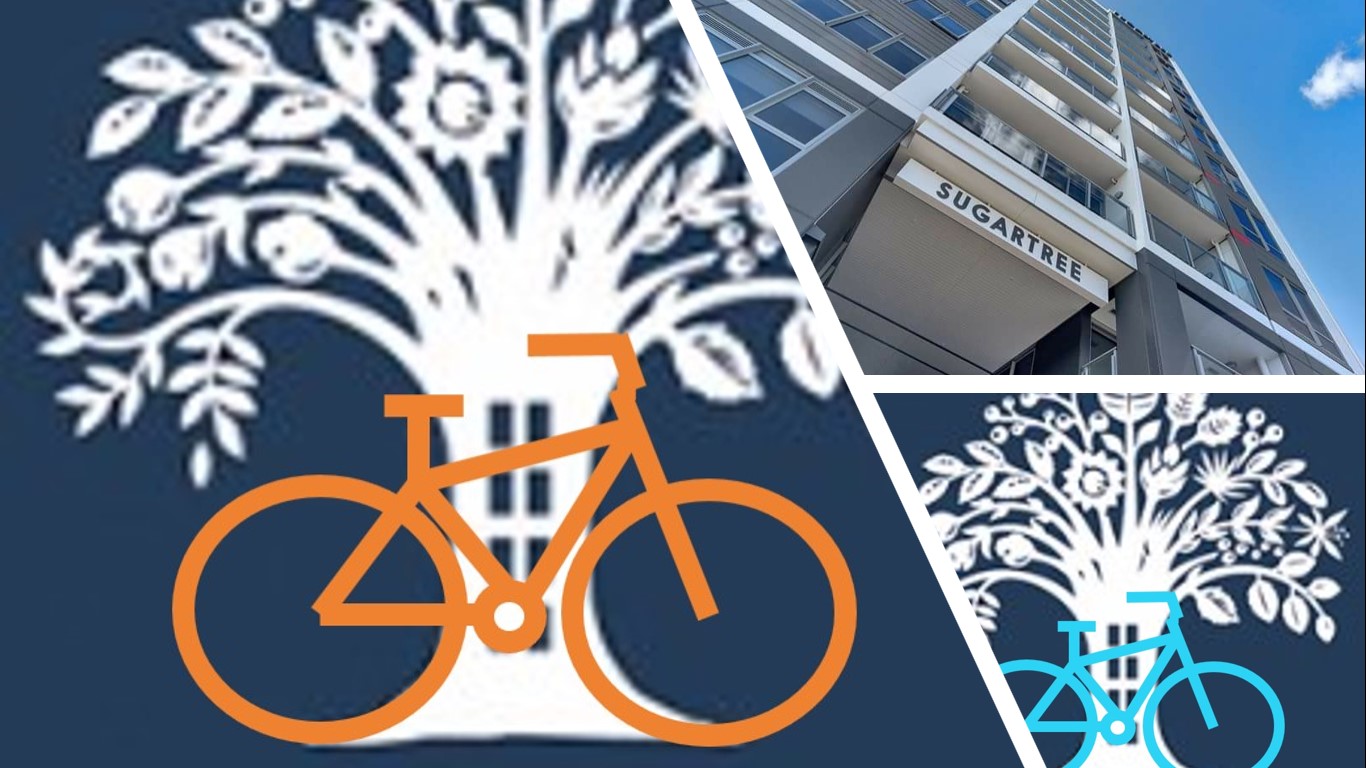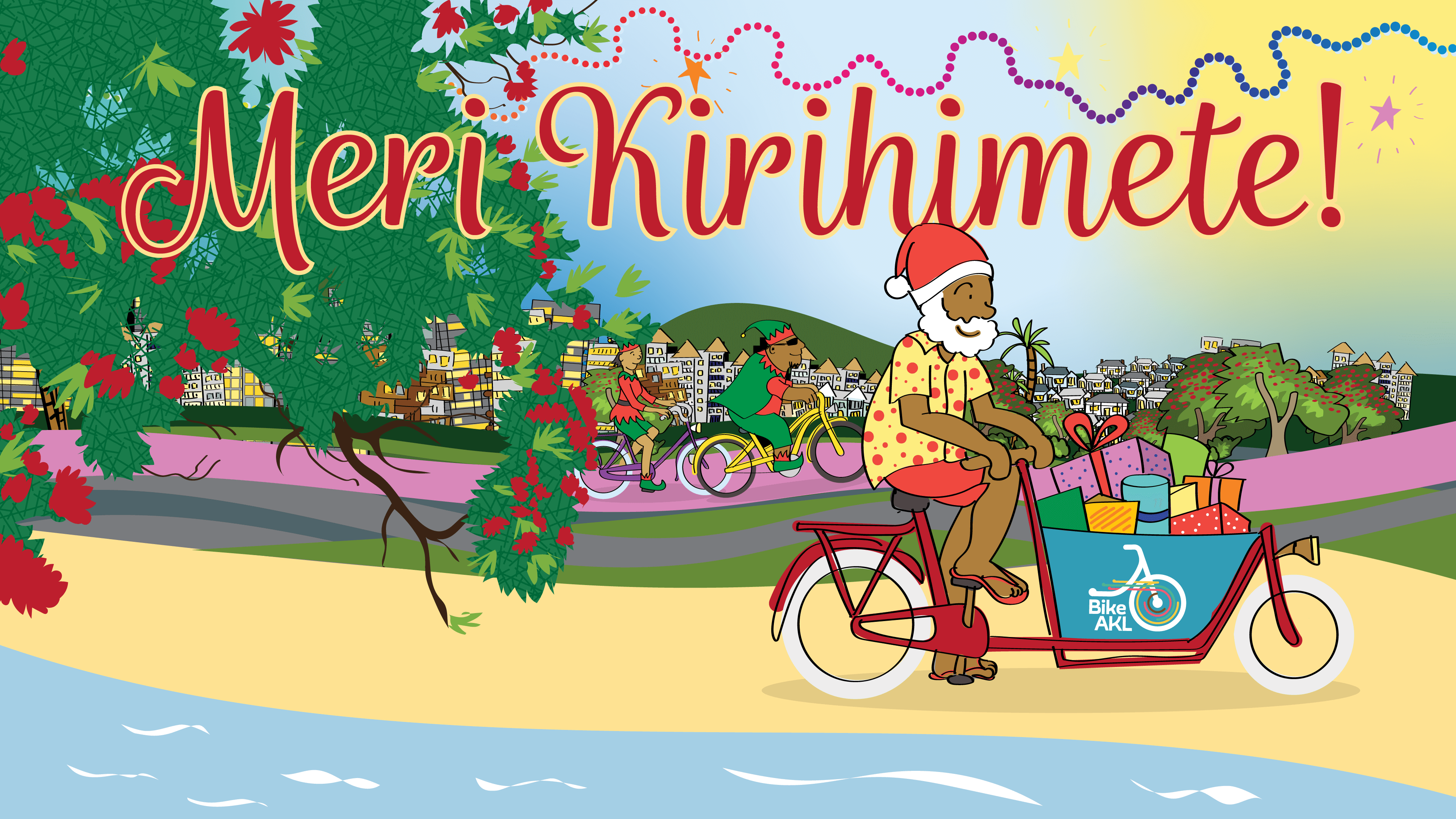Auckland has always been a ‘city of villages’, highly walkable and bikeable neighbourhoods, each with its own character. So it’s no surprise that all over Auckland, local bike groups are springing up – some dedicated to particular activities, and others devoted to fostering local connections and fun, in the strong tradition of ‘Bike Burbs‘ like the Puketapapa Active Transport Haven, Bike Devonport,Bike Te Atatu, and Bike Kaipatiki, just to give a few examples.
Meanwhile, the residential population of Auckland’s CBD has risen eight-fold in the last two decades – and each new apartment development is practically a village unto itself (with many already building bikes into the picture). So it was only a matter of time before the first ‘Building Bike Burb’ appeared. Below, Matt Cole writes about the energetic new group SugarTree Cyclists and what they’ve been up to.
The challenge
SugarTree is a mixed apartment and retail complex that’s taking shape between 145 Nelson Street and 27 Union Street. Once completed, it will be home to 2000+ residents, with an estimated 7000 regular users of the facilities in SugarTree Lane. It’s billed as an ‘urban village’, created around laneways that draw inspiration from the lively alleys of Singapore and NYC’s Soho. Location-wise, it’s a handy walk or bike to pretty much anywhere in the CBD – plus it’s handily located on the Nelson Street protected cycleway. So far, so good.

Yet the initial bike facilities consist of only a few racks located in the basement car parks – inadequate and not easily accessible, even for residents – with nowhere to park at ground level outside the shops and restaurants.
Even for those of us who live in SugarTree, the issue was clear: too many bikes for the rack space available, so if you dared go for a ride, your space would be gone when you got back. Overcrowded bike racks, and chaos on the street – clearly action was needed!

As experienced Auckland cyclists, we knew we had to act. So we raised the issue with the building manager and the first meeting of the body corporate, which led to a request for help in determining what facilities were needed.
Who to talk to? What to ask?
We created a basic flyer to pop into the mailbox of each apartment and retail outlet. Alongside this, we established a simple Facebook Group (@SugarTreeCyclists) to share ideas.
We assumed the issue of how to provide adequate bike facilities for a big development like ours had already been solved by many others. So we hunted for examples of success – engaging friends, groups, local authorities and of course trusted local bike shops.
We soon had a shortlist of the essential minimum bike facilities, with proven examples. Scoping these out and road-testing them gave us what we needed for an initial presentation to the body corp. And it wasn’t just about equipment – we also assembled and shared events that our bike community might enjoy.

The results
In a few short weeks, we gathered vast experience and knowledge from a wide range of places and sources. The resulting document outlining our wishes for SugarTree Cyclist facilities is hosted on our Facebook group, has garnered lots of support, and will now form the focus for rolling out these resources. We also have a Cycling Links document, listing the most helpful websites visited to date.
Best of all, we’ve started a self-sustaining community. A lively group of bike-savvy people all sharing the best ideas, taking part in local events, and encouraging others to try a bike. A stable network of links to the most helpful groups and resources. All the information needed to explain what facilities are required, with images and examples.
And even if only 4-5% of Sugartree residents and visitors ride a bike (i.e. the average cycling rate of inner-city burbs, at least at the previous census), that’s still 350-450 very happy people on bikes!
We welcome further ideas, and engagement by other inner-city-dwellers looking to boost bikes: please do look us up and join the group – you may have the best idea yet.
A model for others
Sharing ideas is essential when addressing a challenge like the one faced by SugarTree: how to progress from very limited cycle facilities to a great set of proven examples that are well-used and well-liked.
How to find resources
Start with great local knowledge. If you’re a member of a riding club, such as Auckland Central, Manukau Vets and the Auckland Cycle Touring Association, talk to experienced cyclists. Draw on the international dimension: New York, Portland; London, Cambridge; Amsterdam, Utrecht; Copenhagen. And moderate this with local experience from advocacy groups such as Bike Auckland, as well as New Zealand wide, such as Cycle Action Network.
What to look for
Seek distilled wisdom about what’s worked well elsewhere. In our case, we wanted to know what facilities have really worked for mixed apartment / retail developments with thousands of residents and visitors. Then ‘flip the telescope’ and look at what has not worked, and why. Using personal contacts, social media and old-fashioned e-mail, keep asking questions until you have a good first-hand insight.
Make the information work for you
Here’s where the magic happens. Take the insights proven in cities around the world and run it past locals, who will soon identify pitfalls or gaps, and can confirm when all looks well. Consult widely with local bike shops, friends and family. And work out what you don’t know yet. Many of the people who might use bike facilities won’t necessarily be experienced cyclists – especially in a city like Auckland, where cycling infrastructure is unlocking decades of pent-up demand – so the facilities will need to work for all: cargo bikes, kids’ bikes, e-bikes, all sorts of bikes.
Share the love
Facebook groups and shared posts work very well as a discussion tool to connect people despite time differences around the world or different local work shifts. Contributors can share their views when it is convenient for them. Always aim to contribute to the groups you seek advice from, as they’re often solving challenging topics of their own and could use your perspective, too.
Just looking at the Sugar Tree Facebook group @SugarTreeCyclists, for example, we’re connected to over 10 linked groups, like the Central Bike District and other bike burbs, cycling clubs, triathlon clubs, specialist bike discussion groups, and general community groups for the central city like the City Centre Residents Group. It’s fantastic to be part of a diverse and growing discussion about how we fit bikes into our lives, and not just into our buildings.
With the success of @SugarTree Cyclists, we’ve been asked to look at the wider area of Auckland in which SugarTree sits: the Victoria Quarter. There’s a new public facebook group @VictoriaQuarter, and we have a host of new activities underway, including the current petition to improve the area in collaboration with the CCRG.
Do sign in, sign up and share your ideas. The Victoria Quarter sits at the end of the Pink Path, so even if you don’t live here, you’ve probably traveled through it many times, and we welcome your views.
Lastly: a key part of this initiative is to help connect local businesses and residents, and to this end I’m now working with Kathryn King of AT’s Cycling & Walking team and Jo Clendon of Bikes Welcome to bring the Bikes Welcome programme to Auckland at large, and help merchants and businesses welcome customers on bikes.
–Matthew Cole




